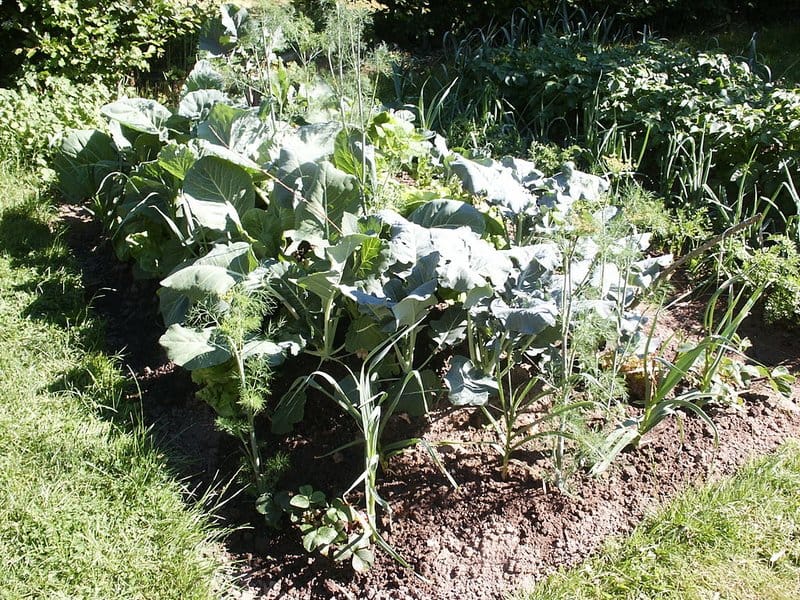Hügelkultur


Hügelkultur (pronounced "hue-gul-culture") is a sustainable gardening technique that involves creating raised garden beds filled with decaying wood and other organic matter.
Originating from German-speaking countries, the word hügelkultur translates to "hill culture" or "mound culture" in German. This method mimics the natural decomposition processes that occur on forest floors, where fallen trees decay and send nutrients into the soil.
How Hügelkultur Works
Hügelkultur beds are built by layering logs of wood at the base, then covering them with smaller organic matter such as leaves, straw, compost, and soil.
As the wood decomposes, it:
- Releases nutrients into the soil.
- Retains moisture, reducing the need for irrigation.
- Creates an environment for beneficial microorganisms and fungi.
Key Benefits of Hügelkultur
Here are some of the key benefits to using hügelkultur in your garden:
Improved Water Retention
As the wood decomposes, it acts like a sponge, soaking up rainwater and gradually releasing it to plant roots. This is particularly useful in dry climates or areas prone to drought.
Nutrient-Rich Soil
The decaying wood and organic matter create fertile soil, rich in nutrients for plants. Over time, the bed becomes a self-sustaining nutrient source.
Long-Term Sustainability
Hügelkultur beds can last for years as the wood continues to decompose, requiring less maintenance compared to traditional raised beds.
Reduction of Garden Waste
It’s an excellent way to recycle logs, branches, and other garden debris that would otherwise be discarded.
Enhanced Soil Microbiology
The decomposing wood encourages the growth of fungi, earthworms, and microorganisms that help improve soil health.
Extended Growing Season
The decomposition process generates heat, which can warm the soil and allow for earlier planting in the spring.
How to Build a Hügelkultur Bed
Follow these steps to create your own hügelkultur bed:
- Choose a Site
- Pick a sunny, well-drained location. The best size for starting a hügelkultur bed is around 6ft (2m) Long x 3ft (1m) wide.
- Traditionally, the sites for hügelkultur beds will start by digging a small pit for piling the materials in, but it can still work by piling it on the surface of the ground.
- Gather Materials
- Logs and Branches: Use untreated wood, preferably hardwoods like oak, maple, or apple. Avoid rot-resistant woods like cedar or walnut, as these will not decay as easily. Ideally, the wood should be sourced from trimmings within your own garden or nearby.
- Smaller Organic Materials: Twigs, leaves, grass clippings, straw, or shredded cardboard. If you start with digging the bed as a pit on a grassy area, lay the removed sod upside down in this layer.
- Soil and Compost: Top the mound with nutrient-rich soil and compost.
- Layer the Hügelkultur Bed
- Start by placing large logs and branches on the ground. Arrange them to form a mound shape.
- Add a layer of smaller branches and twigs on top of the logs.
- Fill gaps with leaves, straw, or other organic matter to hold the structure together.
- Before covering the mound with the soil layer, water the wood heap thoroughly.
- Cover the mound with compost or nutrient-rich soil (at least 6–12 inches deep).
- You should aim to have a mound that slopes on each side at a 45° angle as this will prevent soil compaction.

- Plant Your Crops
Once the bed is covered in soil, you can plant vegetables, flowers, or herbs directly into it. Fast-growing plants like beans, cucumbers, tomatoes, and squash do particularly well in the nutrient-rich environment.
- Mulch and Maintain
Add a layer of mulch (straw or wood chips) to conserve moisture and prevent erosion.

Tips for Success
- Avoid Fresh Wood: Fresh wood can temporarily absorb nitrogen as it decomposes. To prevent nutrient loss, use older wood that is already starting to decay.
- Plan for Settling: Hügelkultur beds shrink over time as the wood decomposes, so start with a higher mound than you think you will need.
- Balance the Layers: Use a variety of organic materials for the best nutrient mix.
- Water Thoroughly at First: Saturate the mound during the building process to ensure the wood absorbs as much moisture as possible.
When to Use Hügelkultur
- In dry climates where water conservation is critical.
- To make use of fallen trees, branches, or garden debris.
- In poor or compacted soils, where building a raised bed improves soil quality.
- For permaculture systems and sustainable gardening projects.





